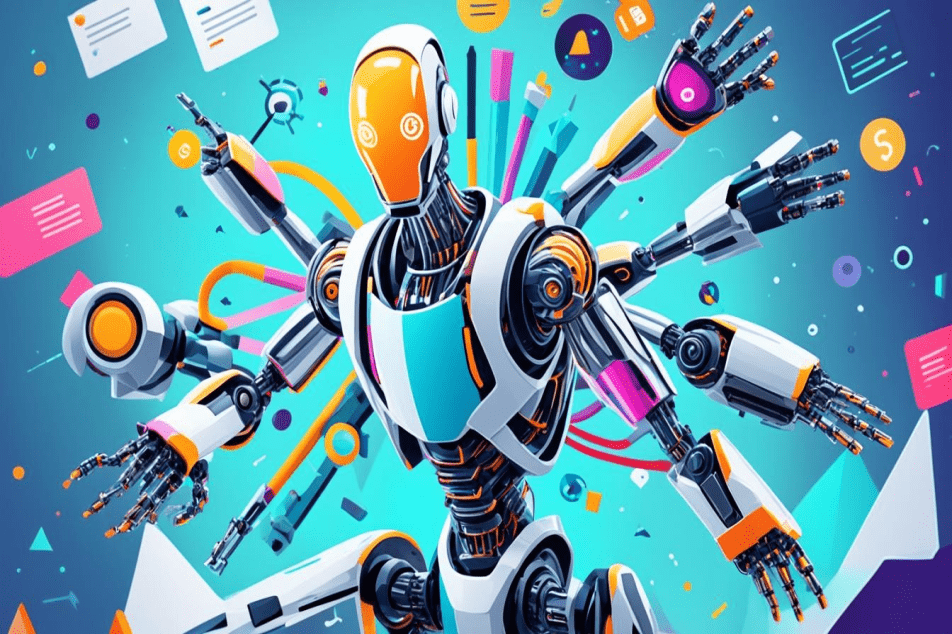The world of design is undergoing a revolutionary transformation, thanks in large part to AI for generative design. This technology is reshaping how digital creators approach their work, offering innovative tools that enhance creativity and efficiency. As we delve into the impact of AI for generative design, we uncover how it is not only changing the creative landscape but also expanding the possibilities for designers worldwide.

Understanding Generative Design
Generative design is a design method that uses algorithms and computer software to create complex structures and patterns. By leveraging AI, designers can explore a multitude of design options, optimizing for constraints like material use, structural integrity, and aesthetics. The result is a more efficient and creative process that pushes the boundaries of traditional design.
The Role of AI in Generative Design
AI plays a pivotal role in generative design by analyzing vast amounts of data and providing insights that would be impossible for humans to achieve on their own. With the help of machine learning, AI systems can learn from previous designs and suggest improvements or entirely new concepts. This not only speeds up the design process but also ensures that the resulting designs are both innovative and practical.
AI Tools Revolutionizing Design
There are numerous AI tools available that are revolutionizing the field of design. These tools help designers automate repetitive tasks, generate design variations, and even predict design trends. For a deeper understanding of how these tools are shaping the industry, you can explore this comprehensive guide on AI tools for graphic design.
The Benefits of AI for Designers
The integration of AI in generative design offers numerous benefits for designers:
- Increased Efficiency: AI streamlines the design process, allowing designers to focus on creativity while the software handles complex calculations and data analysis.
- Enhanced Creativity: By providing a wide range of design options, AI fosters creativity and encourages designers to explore new ideas.
- Optimized Designs: AI can optimize designs for specific constraints, ensuring the final product is both functional and aesthetically pleasing.
Challenges and Considerations
While the benefits of AI for generative design are clear, there are also challenges to consider. Designers must learn how to effectively use AI tools and integrate them into their workflow. Additionally, there are concerns about the potential loss of the human touch in design, as AI-generated designs may lack the emotional depth and nuance that comes from human creativity.
AI in Action: Real-World Applications
Generative design powered by AI is already making waves in various industries. In architecture, AI is being used to create structures that are both sustainable and innovative. In product design, AI helps in developing products that meet specific user needs while minimizing waste. You can read more about how AI is impacting architectural visualization and other fields.
Future Prospects of AI in Design
The future of AI in generative design is bright, with endless possibilities for innovation and creativity. As AI technology continues to evolve, designers will have access to even more powerful tools that will further enhance their ability to create groundbreaking designs. The potential for collaboration between humans and AI is vast, promising a future where creativity knows no bounds.
Conclusion
AI for generative design is a game-changer for digital creators, offering new ways to innovate and push the boundaries of traditional design. While challenges remain, the benefits of integrating AI into the design process are clear. As technology continues to advance, the possibilities for creative expression and design innovation are endless, paving the way for a future where AI and human creativity work hand in hand.

FAQs
What is generative design?
Generative design is a process that uses algorithms and AI to create complex designs and structures, optimizing for various constraints like material use and aesthetics.
How does AI enhance creativity in design?
AI enhances creativity by providing designers with a wide range of design options and insights, encouraging them to explore new ideas and push creative boundaries.
What are the challenges of using AI in generative design?
Challenges include learning how to effectively use AI tools, integrating them into existing workflows, and ensuring that AI-generated designs retain the human touch and emotional depth.







